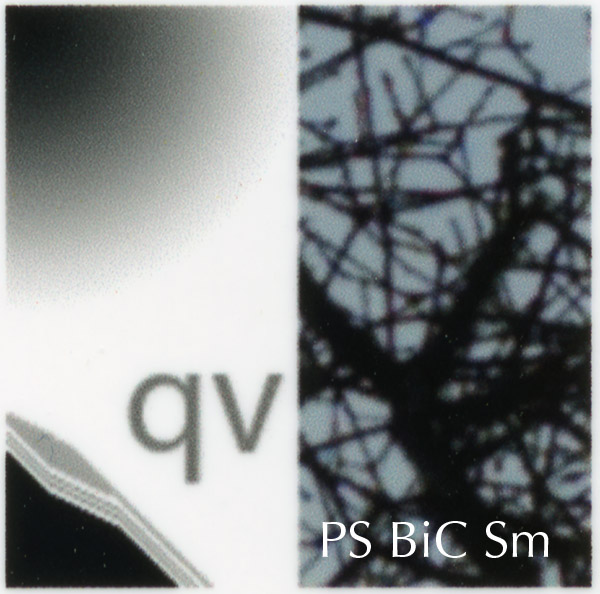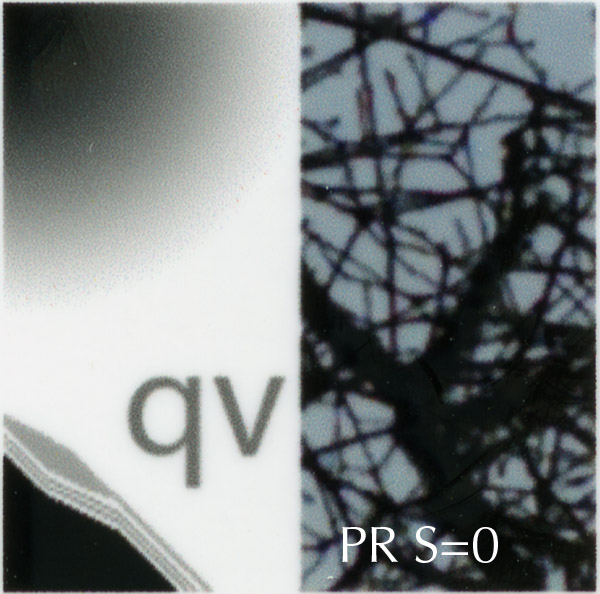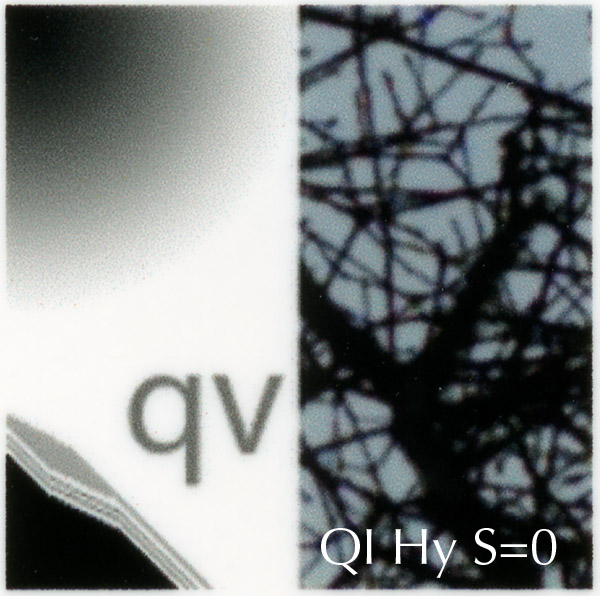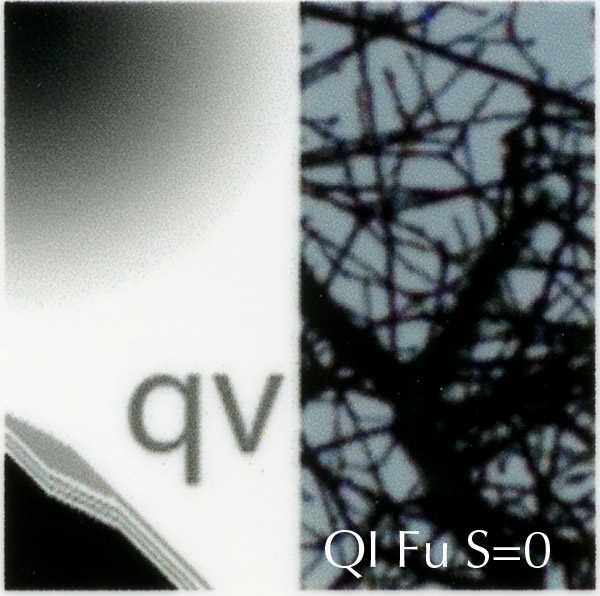This next set of images is based on a 240 ppi target scaled to the 360 ppi printer resolution. Because the target is the same 150 pixel on a side target, the images on paper are somewhat smaller.
Here are the results, followed by an analysis.
Photoshop Bicubic Smoother (above)
Perfect Resize (above)
Qimage Hybrid (above)
Qimage Fusion (above)
Analysis:
The results for the radial gradient are the same as at 145 ppi. This is as expected; smooth parts of the image are not greatly affected by resampling, unless it’s done really badly.
Except for bicubic, which produces fuzzy results, the letters are pretty much the same with all the interpolation methods. If pressed, I’d give the nod to Perfect Resize.
Perfect resize does the best job with the tightly spaced parallel lines, although it’s not number one in showing the separation between the two 45° lines. It wins because it gets the tonal values right in the 30° section, something that neither fusion no hybrid algorithms do.
Perfect Resize and bicubic have the least amount of noise in the sky. Fusion seems to produce the crispest branches, and could actually be accused of adding a tiny bit of contrast. The hybrid branches are about as crisp as the Perfect Resize ones, and are slightly more contrasty.




Leave a Reply